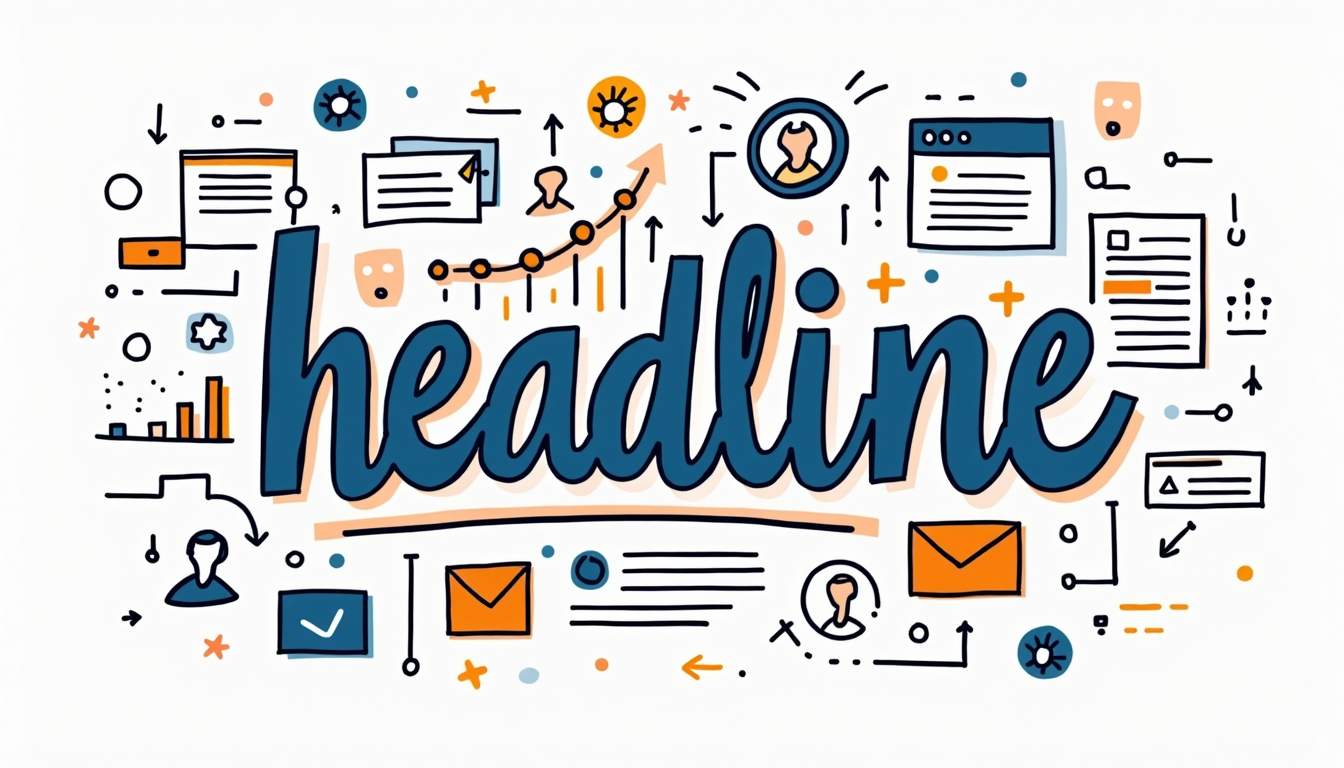In today’s digital-first world, having a compelling LinkedIn profile is more than just a nice-to-have. It’s essential for building a professional network and opening doors to potential job opportunities. This article will guide you through the steps to optimize your LinkedIn profile for maximum impact, ensuring you stand out in a crowded online marketplace.
Understanding LinkedIn’s Role in Professional Networking
LinkedIn has evolved from being merely a job search platform to a full-fledged professional networking site. It serves as a virtual handshake, where first impressions matter greatly. A well-optimized profile can help you connect with industry leaders, engage with relevant content, and gain insights into market trends.

Effective networking on LinkedIn goes beyond just adding connections. It involves engaging with your network, sharing valuable content, and positioning yourself as an expert in your field. By doing so, you enhance your professional image and build trust within your industry. Regularly participating in discussions, commenting on posts, and sharing your insights can create a dynamic presence that attracts attention and fosters meaningful relationships.
The Importance of a Strong LinkedIn Profile
A strong LinkedIn profile is your digital identity. It reflects your professional story, showcasing not only your qualifications but also your personality and aspirations. Recruiters often use LinkedIn to find potential candidates, assessing profiles that stand out as memorable and meaningful. Including keywords relevant to your industry can also improve your chances of being discovered by recruiters searching for specific skills.
Your profile is often the first point of contact potential employers or clients will have with you, making it imperative that it is polished and professional. Prioritize a clean and detailed profile, as this can lead to greater visibility and increased interest from hiring managers. Additionally, incorporating multimedia elements such as presentations, videos, or articles can further enrich your profile, providing a more comprehensive view of your capabilities and achievements.
How LinkedIn Influences Your Professional Image
On LinkedIn, your professional image can significantly influence perceptions about your abilities and potential. Each section of your profile contributes to this image. A polished profile conveys professionalism and attentiveness, while a poor one might suggest negligence. Consistency in your messaging across your profile and posts reinforces your brand, making it easier for others to understand your professional identity.
Moreover, LinkedIn operates under a unique algorithm that favors profiles that are complete with images, summaries, and recommendations. Being active on the platform and regularly updating your profile can bolster your professional standing and help you build a robust network. Engaging with industry-related groups and participating in conversations can also enhance your visibility, allowing you to connect with like-minded professionals and potential mentors. As you share your knowledge and experiences, you not only establish yourself as a thought leader but also open doors to new opportunities and collaborations that can further your career.
Starting with the Basics: Profile and Background Photo
The first step in optimizing your LinkedIn profile is selecting effective profile and background photos. These are crucial visual elements that immediately shape how others perceive you. They should align with the professional image you wish to convey.
Your profile picture should be a recent, high-quality headshot that clearly represents you. Ideally, it should showcase you in professional attire and against a neutral background, allowing your face to stand out. Remember, this image will be the first introduction to many of your connections.
Choosing the Right Profile Picture
When choosing your profile picture, consider the impression you want to make. Aim for an approachable yet professional look. Avoid using distracting backgrounds or overly casual photos, as this could undermine your profile’s effectiveness.
Research indicates that profiles with professional photographs receive far more engagement compared to those without any images. A well-chosen profile picture sets the tone for your profile and encourages others to connect with you. Additionally, consider the lighting and angle of your photo; natural light often yields the best results, while a slight angle can add a touch of dynamism to your image. Remember, this is your chance to make a memorable first impression, so invest the time to get it right.
Crafting an Engaging Background Photo
Your background photo is an additional opportunity to communicate aspects of your professional persona. It should reflect your personal brand or the field you are in. For instance, if you work in technology, you might opt for an image that showcases coding or innovative tech scenes.
A compelling background photo complements your profile picture and creates a visually appealing experience. Make sure the image is of high quality and aligns with the overall message you want to convey through your LinkedIn profile. Consider using images that evoke emotion or inspire curiosity, as these can draw viewers in and encourage them to explore your profile further. Furthermore, think about incorporating elements that highlight your skills or achievements, such as a subtle graphic representing your industry or a snapshot of you in action at a conference or event, which can add a personal touch and context to your professional narrative.
Mastering the Art of the Headline
Your LinkedIn headline is one of the first things people notice, and it plays a significant role in capturing interest. It should articulate who you are and what you do in a succinct manner, often leading to further exploration of your profile.

Unlike resumes, LinkedIn allows for creativity in your headline. Use this space wisely to not only share your job title but also incorporate key elements of your expertise and aspirations. This makes your profile more searchable for recruiters looking for specific skill sets or experiences.
Writing a Headline That Grabs Attention
To create a compelling headline, think about your unique selling proposition. What makes you different from others in your field? Craft your headline to reflect this uniqueness, whether by showcasing key skills, industry credentials, or noteworthy career achievements.
Incorporating action words can also stimulate interest. Avoid generic phrases, and instead, use targeted language that communicates value. A well-structured and thoughtful headline can make the difference between someone choosing to interact with your profile or skimming past it.
Using Keywords in Your Headline
Keywords are critical in ensuring your profile appears in searches by recruiters or potential collaborators. Think about the terms that hiring managers might use to search for professionals in your position.
Include relevant industry-specific keywords in your headline, placing them strategically to enhance visibility while still maintaining clarity. This will not only help you appear in search results but will also convey your expertise to anyone visiting your profile.
Making the Most of Your Summary
Your summary is an invaluable section where you can elaborate on your professional journey, skills, and ambitions. This is your opportunity to tell your story in a way that connects with the reader and highlights your unique attributes.

Consider structuring your summary to cover succinctly who you are, what you do, and where you’re heading professionally. This personal narrative can help potential employers and connections understand your motivations and align with your ambitions.
Telling Your Story in the Summary Section
When writing your summary, engage your readers with storytelling techniques. Describe pivotal moments in your career, what motivated you to pursue your current path, and the values that drive your work. This approach not only keeps readers interested but fosters a connection with them.
Being authentic in your summary will resonate more with potential connections or employers. Strike a balance between professionalism and individuality, as this will make your profile feel more relatable and engaging.
Highlighting Your Skills and Achievements
Don’t just state your qualifications; illustrate your key achievements and the skills that enable them. Use specific examples and quantifiable outcomes where possible to provide evidence of your accomplishments.
Incorporating information about certifications, awards, or notable projects can add significant weight to your summary. Make sure they are relevant to your current career goals and the professional image you want to project.
Showcasing Your Experience and Education
When describing your professional experience and educational background, prioritize clarity and detail. List your roles in reverse chronological order, and include key responsibilities and successes associated with each position.
Additionally, consider incorporating volunteer work or freelance projects as they may provide context to your capabilities. They can also illustrate worldviews, passion, and commitment—qualities that employers value highly.
Listing Your Professional Experience Effectively
When detailing your professional experience, use bullet points for clarity and brevity. Begin each point with an action verb to convey your contributions decisively. This not only makes your profile easier to read but also highlights your impact at each role.
Be mindful to tailor the information to the type of opportunities you are seeking. Consider what experiences are most relevant and illustrative of your abilities, ensuring alignment with your professional objectives.
Highlighting Your Educational Background
Your educational background is an important aspect of your profile, enhancing your credibility. List your degrees, institutions, and graduation dates, and consider adding honors or relevant coursework that aligns with your career path.
In addition, any additional certifications, online courses, or workshops can provide valuable context to your skills. These elements demonstrate your commitment to ongoing personal and professional development, which can be particularly appealing to more progressive employers.
Optimizing your LinkedIn profile can significantly enhance your professional presence and networking potential. By carefully curating each section of your profile with quality content, strategic keywords, and personal anecdotes, you can create a strong digital footprint in your industry. Start implementing these strategies today to unlock greater engagement and opportunity on LinkedIn.